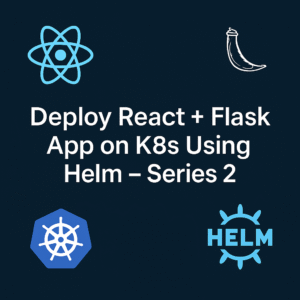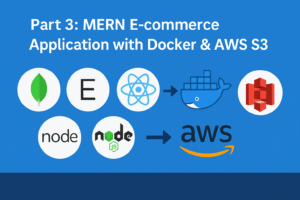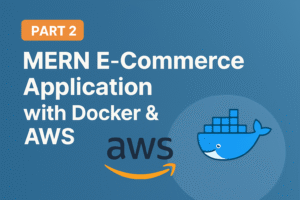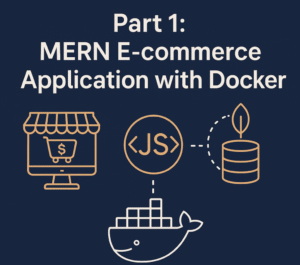🚀 K8s YSeries #2-Why File mounting beats environment variables
🔐 Kubernetes Secrets: Why File Mounting Beats Environment Variables
🚨 The Problem: Environment Variable Security Risks
Real-World Security Incident
# Common but DANGEROUS pattern
apiVersion: apps/v1
kind: Deployment
metadata:
name: payment-api
spec:
template:
spec:
containers:
- name: payment-service
image: payment-api:v1.2.0
env:
- name: DB_PASSWORD
valueFrom:
secretKeyRef:
name: payment-db-secret
key: password
- name: STRIPE_SECRET_KEY
valueFrom:
secretKeyRef:
name: payment-secrets
key: stripe-key
- name: JWT_SECRET
valueFrom:
secretKeyRef:
name: auth-secrets
key: jwt-secret
What Actually Happens in Production:
1. Process Listing Exposure
# Any user with kubectl access can see this:
kubectl exec payment-api-7d4f8b9c-xyz -- ps aux
# Output reveals ALL secrets:
USER PID COMMAND
root 1 payment-api --db-pass=super_secret_password_123 --stripe-key=sk_live_abc123... --jwt=eyJhbGc...
2. Container Logs Leak Secrets
# Application startup logs
kubectl logs payment-api-7d4f8b9c-xyz
# Typical output:
2024-01-15 10:30:21 INFO Starting payment service...
2024-01-15 10:30:22 DEBUG Config loaded: DB_PASSWORD=super_secret_password_123
2024-01-15 10:30:22 DEBUG Stripe key configured: STRIPE_SECRET_KEY=sk_live_abc123def456...
2024-01-15 10:30:22 ERROR Failed to connect: connection string contains password
3. Crash Dump Exposure
# When application crashes, environment variables are included in core dumps
kubectl exec payment-api-7d4f8b9c-xyz -- cat /proc/1/environ
# Output: DB_PASSWORD=super_secret_password_123STRIPE_SECRET_KEY=sk_live_abc123...
4. Monitoring System Exposure
# Prometheus metrics accidentally expose secrets
# payment_service_config{db_password="super_secret_password_123"} 1
# stripe_api_calls_total{api_key="sk_live_abc123"} 42
✅ The Solution: File-Based Secret Mounting
Secure Implementation Pattern
apiVersion: v1
kind: Secret
metadata:
name: payment-db-credentials
namespace: payments
type: Opaque
data:
username: cGF5bWVudHNfZGJfdXNlcg== # payments_db_user (base64)
password: c3VwZXJfc2VjcmV0X3Bhc3N3b3JkXzEyMw== # super_secret_password_123 (base64)
host: cGF5bWVudHMtZGIucmRzLmFtYXpvbmF3cy5jb20= # payments-db.rds.amazonaws.com (base64)
---
apiVersion: v1
kind: Secret
metadata:
name: payment-api-keys
namespace: payments
type: Opaque
data:
stripe-secret-key: c2tfbGl2ZV9hYmMxMjNkZWY0NTY= # sk_live_abc123def456 (base64)
jwt-secret: ZXlKaGJHY2lPaUpJVXpJMU5pSjk= # eyJhbGciOiJIUzI1NiJ9 (base64)
---
apiVersion: apps/v1
kind: Deployment
metadata:
name: payment-api
namespace: payments
spec:
replicas: 3
selector:
matchLabels:
app: payment-api
template:
metadata:
labels:
app: payment-api
spec:
serviceAccountName: payment-api-sa
containers:
- name: payment-service
image: payment-api:v1.2.0
ports:
- containerPort: 8080
# NO environment variables for secrets!
env:
- name: SERVER_PORT
value: "8080"
- name: LOG_LEVEL
value: "INFO"
# Mount secrets as files instead
volumeMounts:
- name: db-credentials
mountPath: /etc/secrets/database
readOnly: true
- name: api-keys
mountPath: /etc/secrets/api
readOnly: true
# Health checks
livenessProbe:
httpGet:
path: /health
port: 8080
initialDelaySeconds: 30
periodSeconds: 10
# Resource limits
resources:
requests:
cpu: 200m
memory: 256Mi
limits:
cpu: 500m
memory: 512Mi
volumes:
- name: db-credentials
secret:
secretName: payment-db-credentials
defaultMode: 0400 # Read-only for owner only
- name: api-keys
secret:
secretName: payment-api-keys
defaultMode: 0400
items:
- key: stripe-secret-key
path: stripe_key
- key: jwt-secret
path: jwt_secret
Application Code Changes
Before (Environment Variables):
// main.go - INSECURE
package main
import (
"os"
"fmt"
"log"
)
func main() {
// These appear in process listing!
dbPassword := os.Getenv("DB_PASSWORD")
stripeKey := os.Getenv("STRIPE_SECRET_KEY")
jwtSecret := os.Getenv("JWT_SECRET")
// Accidentally logged!
log.Printf("Starting with DB password: %s", dbPassword)
// Initialize services...
}
After (File Reading):
// main.go - SECURE
package main
import (
"io/ioutil"
"log"
"strings"
)
func readSecret(filepath string) (string, error) {
content, err := ioutil.ReadFile(filepath)
if err != nil {
return "", err
}
return strings.TrimSpace(string(content)), nil
}
func main() {
// Read secrets from mounted files
dbPassword, err := readSecret("/etc/secrets/database/password")
if err != nil {
log.Fatal("Failed to read database password:", err)
}
stripeKey, err := readSecret("/etc/secrets/api/stripe_key")
if err != nil {
log.Fatal("Failed to read Stripe key:", err)
}
jwtSecret, err := readSecret("/etc/secrets/api/jwt_secret")
if err != nil {
log.Fatal("Failed to read JWT secret:", err)
}
// Secrets never appear in logs or process listing
log.Println("Starting payment service with secrets loaded from files")
// Initialize services with loaded secrets...
}
🎯 Real-World Use Case Scenarios
Scenario 1: E-commerce Platform
# E-commerce secrets management
apiVersion: v1
kind: Secret
metadata:
name: ecommerce-secrets
namespace: ecommerce
type: Opaque
data:
# Database credentials
db-username: ZWNvbW1lcmNlX3VzZXI=
db-password: cGFzc3dvcmQxMjM0NTY=
# Payment gateway keys
paypal-client-id: QVc5dGVzdF9jbGllbnRfaWQ=
paypal-secret: QVc5dGVzdF9zZWNyZXQ=
stripe-publishable: cGtfdGVzdF9hYmMxMjM=
stripe-secret: c2tfdGVzdF94eXo3ODk=
# Email service
sendgrid-api-key: U0cuYWJjZGVmZ2hpams=
# Redis cache
redis-password: cmVkaXNwYXNzd29yZA==
---
apiVersion: apps/v1
kind: Deployment
metadata:
name: ecommerce-api
namespace: ecommerce
spec:
replicas: 5
selector:
matchLabels:
app: ecommerce-api
template:
metadata:
labels:
app: ecommerce-api
spec:
containers:
- name: api
image: ecommerce-api:v2.1.0
ports:
- containerPort: 8080
# Environment variables for non-sensitive config only
env:
- name: SERVER_PORT
value: "8080"
- name: REDIS_HOST
value: "redis-cluster.cache.svc.cluster.local"
- name: DB_HOST
value: "postgres.database.svc.cluster.local"
# Mount all secrets as files
volumeMounts:
- name: database-creds
mountPath: /etc/secrets/database
readOnly: true
- name: payment-keys
mountPath: /etc/secrets/payments
readOnly: true
- name: service-keys
mountPath: /etc/secrets/services
readOnly: true
# Security context
securityContext:
runAsNonRoot: true
runAsUser: 1000
allowPrivilegeEscalation: false
readOnlyRootFilesystem: true
volumes:
- name: database-creds
secret:
secretName: ecommerce-secrets
defaultMode: 0400
items:
- key: db-username
path: username
- key: db-password
path: password
- name: payment-keys
secret:
secretName: ecommerce-secrets
defaultMode: 0400
items:
- key: paypal-client-id
path: paypal_client_id
- key: paypal-secret
path: paypal_secret
- key: stripe-publishable
path: stripe_publishable
- key: stripe-secret
path: stripe_secret
- name: service-keys
secret:
secretName: ecommerce-secrets
defaultMode: 0400
items:
- key: sendgrid-api-key
path: sendgrid_key
- key: redis-password
path: redis_password
Scenario 2: Microservices with Service Mesh
# Auth service with mTLS certificates
apiVersion: v1
kind: Secret
metadata:
name: auth-service-certs
namespace: auth
type: kubernetes.io/tls
data:
tls.crt: LS0tLS1CRUdJTiBDRVJUSUZJQ0FURS0tLS0t...
tls.key: LS0tLS1CRUdJTiBQUklWQVRFIEtFWS0tLS0t...
ca.crt: LS0tLS1CRUdJTiBDRVJUSUZJQ0FURS0tLS0t...
---
apiVersion: v1
kind: Secret
metadata:
name: auth-service-secrets
namespace: auth
type: Opaque
data:
jwt-private-key: LS0tLS1CRUdJTiBSU0EgUFJJVkFURSBLRVktLS0tLQ==
jwt-public-key: LS0tLS1CRUdJTiBQVUJMSUMgS0VZLS0tLS0=
oauth-client-secret: b2F1dGhfc2VjcmV0XzEyMzQ1Ng==
---
apiVersion: apps/v1
kind: Deployment
metadata:
name: auth-service
namespace: auth
spec:
replicas: 3
selector:
matchLabels:
app: auth-service
template:
metadata:
labels:
app: auth-service
annotations:
# Istio sidecar injection
sidecar.istio.io/inject: "true"
spec:
containers:
- name: auth-service
image: auth-service:v1.5.0
ports:
- containerPort: 8080
- containerPort: 8443 # HTTPS port
# Mount TLS certificates
volumeMounts:
- name: tls-certs
mountPath: /etc/ssl/certs
readOnly: true
- name: auth-secrets
mountPath: /etc/secrets/auth
readOnly: true
# Liveness probe using HTTPS
livenessProbe:
httpGet:
path: /health
port: 8443
scheme: HTTPS
initialDelaySeconds: 30
volumes:
- name: tls-certs
secret:
secretName: auth-service-certs
defaultMode: 0400
- name: auth-secrets
secret:
secretName: auth-service-secrets
defaultMode: 0400
Scenario 3: CI/CD Pipeline Secrets
# Jenkins pipeline secrets
apiVersion: v1
kind: Secret
metadata:
name: ci-cd-secrets
namespace: jenkins
type: Opaque
data:
# Git credentials
git-username: Z2l0aHViX3VzZXI=
git-token: Z2hwX2FiY2RlZmdoaWprbG1ub3A=
# Docker registry
docker-username: ZG9ja2VyX3VzZXI=
docker-password: ZG9ja2VyX3Bhc3N3b3Jk
# Cloud credentials
aws-access-key: QUtJQUlPU0ZPRE5ON0VYQU1QTEU=
aws-secret-key: d0phbHJRVXRuRkVNSS9LN01ERU5HL2JQeFJmaUNZRVhBTVBMRUtFWQ==
# Kubernetes config
kubeconfig: YXBpVmVyc2lvbjogdjEKY2x1c3RlcnM6Ci0gY2x1c3RlcjoK...
---
apiVersion: batch/v1
kind: Job
metadata:
name: deploy-application
namespace: jenkins
spec:
template:
spec:
restartPolicy: Never
containers:
- name: deploy
image: kubectl:v1.25.0
command: ["/bin/sh"]
args:
- -c
- |
# Read secrets from files
export AWS_ACCESS_KEY_ID=$(cat /etc/secrets/aws/access-key)
export AWS_SECRET_ACCESS_KEY=$(cat /etc/secrets/aws/secret-key)
# Use kubeconfig from file
export KUBECONFIG=/etc/secrets/k8s/config
# Deploy application
kubectl apply -f deployment.yaml
volumeMounts:
- name: aws-creds
mountPath: /etc/secrets/aws
readOnly: true
- name: k8s-config
mountPath: /etc/secrets/k8s
readOnly: true
volumes:
- name: aws-creds
secret:
secretName: ci-cd-secrets
defaultMode: 0400
items:
- key: aws-access-key
path: access-key
- key: aws-secret-key
path: secret-key
- name: k8s-config
secret:
secretName: ci-cd-secrets
defaultMode: 0400
items:
- key: kubeconfig
path: config
🔄 Advanced Patterns: Secret Rotation
1. External Secrets Operator
# Using External Secrets Operator with AWS Secrets Manager
apiVersion: external-secrets.io/v1beta1
kind: SecretStore
metadata:
name: aws-secrets-manager
namespace: production
spec:
provider:
aws:
service: SecretsManager
region: us-east-1
auth:
secretRef:
accessKeyID:
name: aws-creds
key: access-key-id
secretAccessKey:
name: aws-creds
key: secret-access-key
---
apiVersion: external-secrets.io/v1beta1
kind: ExternalSecret
metadata:
name: payment-db-secret
namespace: production
spec:
refreshInterval: 300s # Refresh every 5 minutes
secretStoreRef:
name: aws-secrets-manager
kind: SecretStore
target:
name: payment-db-credentials
creationPolicy: Owner
data:
- secretKey: username
remoteRef:
key: production/payment-db
property: username
- secretKey: password
remoteRef:
key: production/payment-db
property: password
2. HashiCorp Vault Integration
# Vault Agent sidecar pattern
apiVersion: apps/v1
kind: Deployment
metadata:
name: secure-app
namespace: production
spec:
template:
metadata:
annotations:
vault.hashicorp.com/agent-inject: "true"
vault.hashicorp.com/role: "payment-service"
vault.hashicorp.com/agent-inject-secret-db-creds: "secret/data/db"
vault.hashicorp.com/agent-inject-template-db-creds: |
{{- with secret "secret/data/db" -}}
username={{ .Data.data.username }}
password={{ .Data.data.password }}
{{- end -}}
spec:
containers:
- name: app
image: payment-service:v1.0.0
volumeMounts:
- name: vault-secrets
mountPath: /vault/secrets
readOnly: true
# Application reads from /vault/secrets/db-creds
volumes:
- name: vault-secrets
emptyDir:
medium: Memory # Store in memory only
🛡️ Security Best Practices
1. RBAC for Secrets
# Limit secret access with RBAC
apiVersion: rbac.authorization.k8s.io/v1
kind: Role
metadata:
namespace: payments
name: payment-secret-reader
rules:
- apiGroups: [""]
resources: ["secrets"]
resourceNames: ["payment-db-credentials", "payment-api-keys"]
verbs: ["get"]
---
apiVersion: rbac.authorization.k8s.io/v1
kind: RoleBinding
metadata:
name: payment-service-binding
namespace: payments
subjects:
- kind: ServiceAccount
name: payment-api-sa
namespace: payments
roleRef:
kind: Role
name: payment-secret-reader
apiGroup: rbac.authorization.k8s.io
---
apiVersion: v1
kind: ServiceAccount
metadata:
name: payment-api-sa
namespace: payments
2. Secret Encryption at Rest
# EncryptionConfiguration for etcd
apiVersion: apiserver.config.k8s.io/v1
kind: EncryptionConfiguration
resources:
- resources:
- secrets
providers:
- aescbc:
keys:
- name: key1
secret: c2VjcmV0IGlzIHNlY3VyZQ==
- identity: {}
3. Monitoring Secret Access
# Falco rule for secret access monitoring
- rule: Secret Access
desc: Detect access to Kubernetes secrets
condition: >
kevt and ka and
ka.verb in (get, list) and
ka.resource.resource=secrets and
ka.response_code<400
output: >
Secret accessed (user=%ka.user.name verb=%ka.verb
resource=%ka.target.resource reason=%ka.response_reason)
priority: INFO
tags: [k8s_audit, secrets]
📊 Comparison Matrix
| Aspect | Environment Variables | File Mounting |
|---|---|---|
| Process Visibility | ❌ Visible in ps aux | ✅ Hidden from process listing |
| Log Exposure | ❌ Often logged | ✅ Never in application logs |
| Container Sharing | ❌ Exposed to all containers | ✅ Per-container control |
| Runtime Updates | ❌ Requires restart | ✅ Automatic with refreshInterval |
| File Permissions | ❌ Not applicable | ✅ Fine-grained (0400, 0440) |
| Audit Trail | ❌ Limited | ✅ File access logs |
| Memory Dumps | ❌ Included in dumps | ✅ Excluded from dumps |
| Debugging Safety | ❌ Easy to leak | ✅ Safe to debug |
| Secret Rotation | ❌ Manual restart needed | ✅ Automatic with external tools |
| Multi-tenant Safety | ❌ Namespace-wide exposure | ✅ Pod-specific mounting |
🎯 Migration Checklist
Phase 1: Assessment
- [ ] Audit all deployments using
envfor secrets - [ ] Identify applications that need code changes
- [ ] Plan downtime windows for critical services
- [ ] Test file-reading code in development
Phase 2: Implementation
- [ ] Update application code to read from files
- [ ] Create new secret manifests with proper permissions
- [ ] Update deployment manifests with volume mounts
- [ ] Test secret rotation scenarios
Phase 3: Deployment
- [ ] Deploy to staging environment first
- [ ] Validate secret access and application functionality
- [ ] Monitor for any secret-related errors
- [ ] Roll out to production with gradual deployment
Phase 4: Cleanup
- [ ] Remove environment variable references
- [ ] Update documentation and runbooks
- [ ] Set up monitoring for secret file access
- [ ] Implement automated secret rotation
Bottom Line: File-based secret mounting is not just a best practice—it’s essential for production security. The small code changes required are vastly outweighed by the security benefits and operational improvements you gain.




